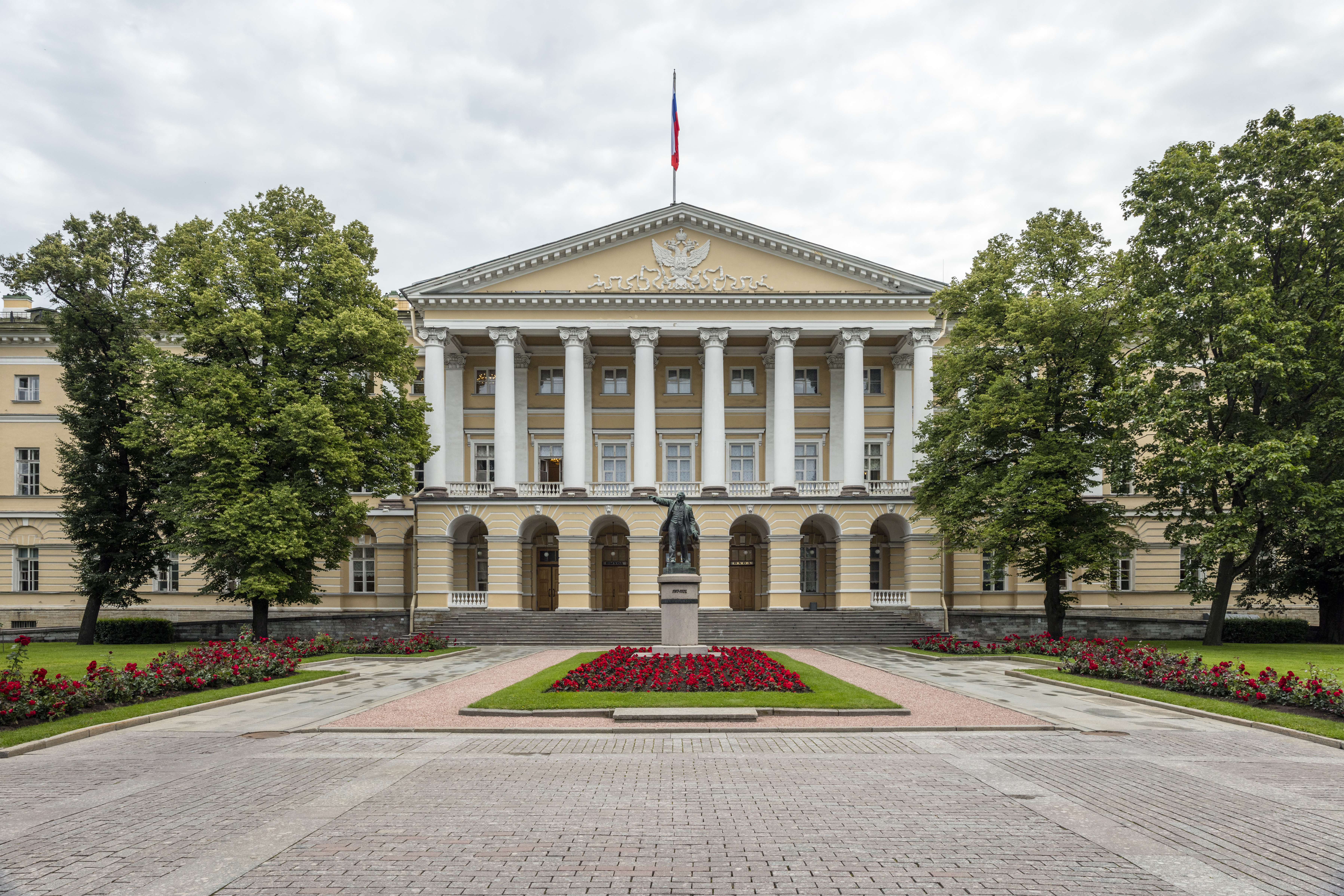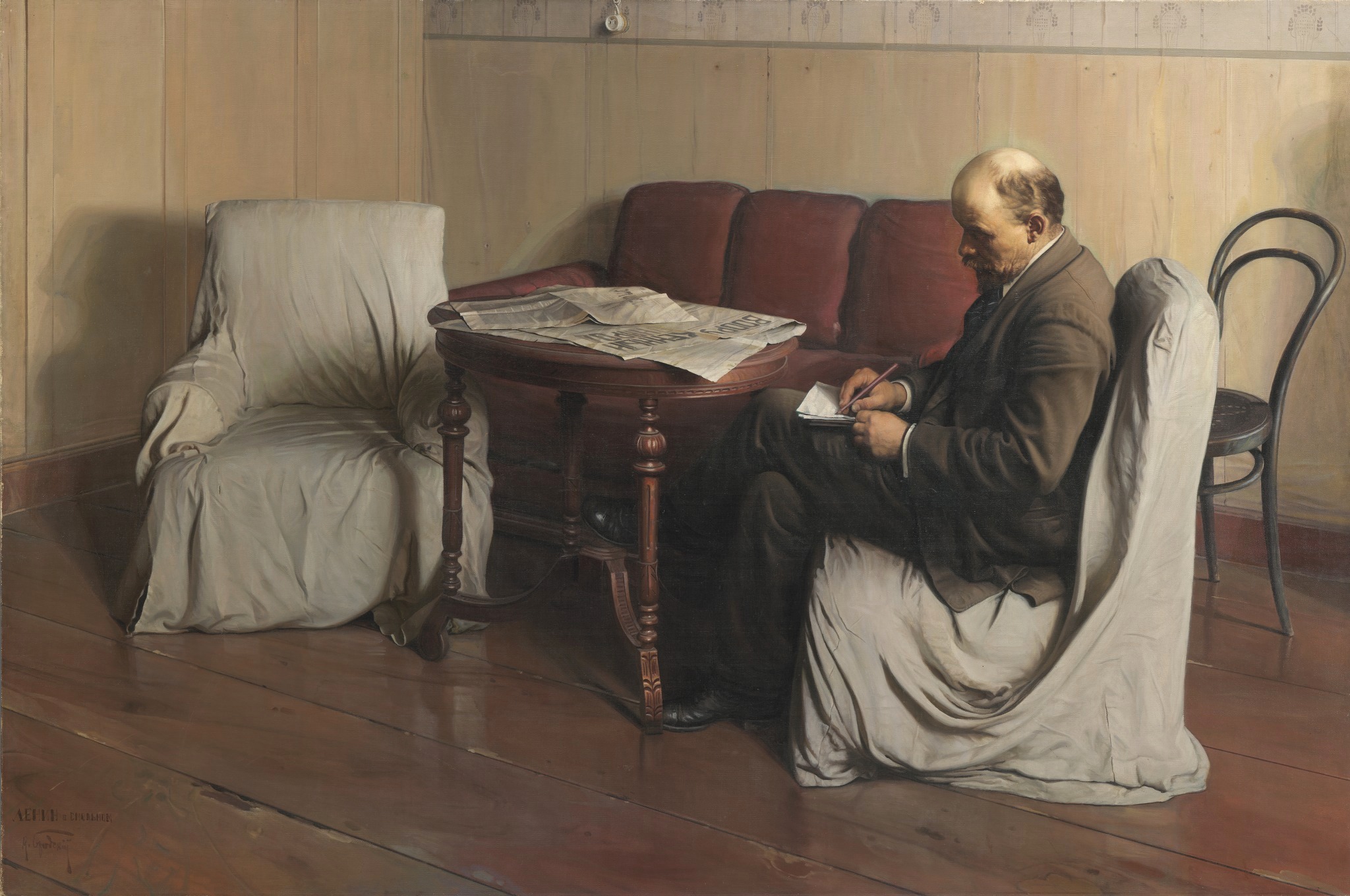Smolny Institute on:
[Wikipedia]
[Google]
[Amazon]
 The Smolny Institute () is a Palladian edifice in
The Smolny Institute () is a Palladian edifice in
 In 1917,
In 1917,
Views of the Smolny
Chapter 4 from '' Six Red Months in Russia'' (1918) by Louise Bryant {{Authority control Buildings and structures in Saint Petersburg 18th century in Saint Petersburg Government of Saint Petersburg Buildings and structures completed in 1808 Assassination of Sergei Kirov Headquarters of political parties Russian Revolution Cultural heritage monuments of federal significance in Saint Petersburg October Revolution
 The Smolny Institute () is a Palladian edifice in
The Smolny Institute () is a Palladian edifice in Saint Petersburg
Saint Petersburg, formerly known as Petrograd and later Leningrad, is the List of cities and towns in Russia by population, second-largest city in Russia after Moscow. It is situated on the Neva, River Neva, at the head of the Gulf of Finland ...
that has played a major part in the history of Russia, notably as a center of women's education, and the headquarters of the Bolsheviks
The Bolsheviks, led by Vladimir Lenin, were a radical Faction (political), faction of the Marxist Russian Social Democratic Labour Party (RSDLP) which split with the Mensheviks at the 2nd Congress of the Russian Social Democratic Labour Party, ...
during the early stages of the October Revolution
The October Revolution, also known as the Great October Socialist Revolution (in Historiography in the Soviet Union, Soviet historiography), October coup, Bolshevik coup, or Bolshevik revolution, was the second of Russian Revolution, two r ...
.
History
The building was commissioned from Giacomo Quarenghi by the Society for Education of Noble Maidens and constructed in 1806–08 to house the Smolny Institute of Noble Maidens, established at the urging of Ivan Betskoy and in accordance with a decree of Catherine II (the Great) in 1764, borrowing its name from the nearby Smolny Convent. The establishment of the institute was a significant step in making education available for females in Russia: "The provision of formal education for women began only in 1764 and 1765, when Catherine II established first the Smolny Institute for girls of the nobility in Saint Petersburg and then the Novodevichii Institute for the daughters of commoners." The Smolny was Russia's first educational establishment for women and continued to function under the personal patronage of the Russian Empress until just before the 1917 revolution. A parterre garden and iron-work grille around the institute date from the early 19th century. Smolny Institute got its name from being close to the Smolny Convent that was built on the place where a resin plant had once been ("smola" is Russian for "resin"). In 1917,
In 1917, Vladimir Lenin
Vladimir Ilyich Ulyanov ( 187021 January 1924), better known as Vladimir Lenin, was a Russian revolutionary, politician and political theorist. He was the first head of government of Soviet Russia from 1917 until Death and state funeral of ...
chose the building as Bolshevik
The Bolsheviks, led by Vladimir Lenin, were a radical Faction (political), faction of the Marxist Russian Social Democratic Labour Party (RSDLP) which split with the Mensheviks at the 2nd Congress of the Russian Social Democratic Labour Party, ...
headquarters immediately before and during the October Revolution
The October Revolution, also known as the Great October Socialist Revolution (in Historiography in the Soviet Union, Soviet historiography), October coup, Bolshevik coup, or Bolshevik revolution, was the second of Russian Revolution, two r ...
. It was Lenin's residence for several months, until the national government was moved to the Moscow Kremlin in March 1918. After that, the Smolny became the headquarters of the local Communist Party apparat, effectively the city hall
In local government, a city hall, town hall, civic centre (in the UK or Australia), guildhall, or municipal hall (in the Philippines) is the chief administrative building of a city, town, or other municipality. It usually houses the city o ...
. In 1927, a monument to Lenin was erected in front of the building, designed by the sculptor Vasily Kozlov and the architects Vladimir Shchuko and Vladimir Gelfreikh. The Smolny Institute was also the site of Sergei Kirov
Sergei Mironovich Kirov (born Kostrikov; 27 March 1886 – 1 December 1934) was a Russian and Soviet politician and Bolsheviks, Bolshevik revolutionary. Kirov was an early revolutionary in the Russian Empire and a member of the Bolshevik faction ...
's assassination in 1934.
After 1991, the Smolny was used as the seat of the city mayor
In many countries, a mayor is the highest-ranking official in a Municipal corporation, municipal government such as that of a city or a town. Worldwide, there is a wide variance in local laws and customs regarding the powers and responsibilitie ...
(governor after 1996) and city administration of Saint Petersburg. Vladimir Putin
Vladimir Vladimirovich Putin (born 7 October 1952) is a Russian politician and former intelligence officer who has served as President of Russia since 2012, having previously served from 2000 to 2008. Putin also served as Prime Minister of Ru ...
worked there from 1991 to 1997 in the administration of Anatoly Sobchak.
Today, this historic building is the official residence of the governor of Saint Petersburg and also houses a museum dedicated to Lenin. Visitors to the museum can tour Lenin's office and living rooms and see the assembly hall where the victory of the October revolution was proclaimed in 1917.
During the Finnish Civil War
The Finnish Civil War was a civil war in Finland in 1918 fought for the leadership and control of the country between Whites (Finland), White Finland and the Finnish Socialist Workers' Republic (Red Finland) during the country's transition fr ...
, the house in Helsinki
Helsinki () is the Capital city, capital and most populous List of cities and towns in Finland, city in Finland. It is on the shore of the Gulf of Finland and is the seat of southern Finland's Uusimaa region. About people live in the municipali ...
which served as headquarters of the pro-Bolshevik Red Guard got nicknamed ″ Smolna″, after the above Bolshevik headquarters in Saint Petersburg
Saint Petersburg, formerly known as Petrograd and later Leningrad, is the List of cities and towns in Russia by population, second-largest city in Russia after Moscow. It is situated on the Neva, River Neva, at the head of the Gulf of Finland ...
. The nickname stuck even after the defeat of the Red Guard, and the building was still so named when used by the victorious anti-Communist Finns.
See also
* Moscow School of the Order of St Catherine, the Moscow equivalent * Novodevichii Institute, equivalent for burgher class studentsReferences
External links
Views of the Smolny
Chapter 4 from '' Six Red Months in Russia'' (1918) by Louise Bryant {{Authority control Buildings and structures in Saint Petersburg 18th century in Saint Petersburg Government of Saint Petersburg Buildings and structures completed in 1808 Assassination of Sergei Kirov Headquarters of political parties Russian Revolution Cultural heritage monuments of federal significance in Saint Petersburg October Revolution